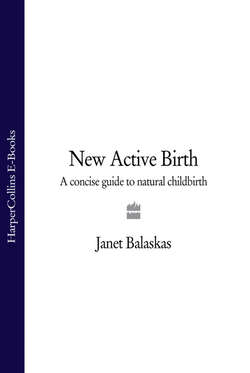Читать книгу New Active Birth: A Concise Guide to Natural Childbirth - Janet Balaskas - Страница 14
Birth Before Obstetrics
ОглавлениеHistorical studies show the prevalent use of vertical positions – kneeling, squatting, standing or sitting postures – with many variations and as many methods of support.
There is evidence going back thousands of years of the bodily positions taken in childbirth. The head of a silver pin from Luristan in Iran, first millenium BC, depicts a squatting mother. The remains of a clay statue of 5750 BC from a shrine at Çatal Hüyük, a Copper Age (Chalcolithic) city in Turkey, shows a goddess giving birth in the same position, as does an 8½ inch Aztec stone fertility figure from Mexico. A relic of the Mound Builders of eastern Arkansas, a pre-Columbian culture of unknown date, shows a woman squatting with her hands on her thighs. The Egyptian hieroglyph meaning ‘to give birth’ shows a mother squatting.
A relief from the temple of Kom Ombo, a town on the Nile in Upper Egypt, shows a woman giving birth in the kneeling position. Birth in the same position can be seen in a marble figure from Sparta, about 500 BC. In ancient China and Japan, women customarily gave birth in the kneeling position on a straw mat. All scenes, of course, depict only the final birth, but positions used during the rest of labour can also be traced.
In the Old Testament, Exodus, chapter I, verse 16 states:
When ye do the office of a midwife to the Hebrew women, and see them upon the stools …
A Corinthian vase depicts a woman in labour seated on a birthchair. An early Greek relief and a Roman marble bas-relief both show a woman giving birth on a stool supported by two assistants. The birthstool was also recommended for uncomplicated labours by Soranus in the early part of the second century AD and by many subsequent writers. It was described as, ‘In a form like a barber’s chair but with a crescent-shaped opening in the seat through which the child may fall.’ The first birthstools may have been rocks or logs of wood, developing over time into complex, adjustable chairs with many varied devices.
There are also many examples of women giving birth without a stool using a variety of upright postures and always supported by one or more attendants while the midwife receives the baby.
